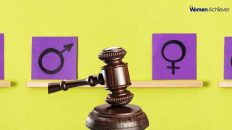Financial Literacy for Women: Empowering Financial Independence and Closing the Knowledge Gap
Financial literacy is critical for achieving financial independence, but women around the world frequently suffer a knowledge gap that impedes their financial decision-making and long-term asset accumulation. While progress has been made, there are still substantial hurdles to guaranteeing women’s equal access to financial knowledge and instruments. Here’s why narrowing the knowledge gap is critical, and how women may secure a better financial future.
Why Financial Literacy Matters for Women
Financial literacy enables women to take control of their financial lives, allowing them to make informed decisions regarding savings, investments, debt management, and retirement planning. Understanding financial principles is more than simply personal empowerment; it’s also a tool for achieving long-term stability and security.
The Knowledge Gap: Challenges Women Face
Cultural and Societal Barriers
In many cultures, men bear the majority of financial duties. This can result in women being less involved in significant financial decisions, restricting their access to financial education early in life. Breaking these cultural conventions is critical to promoting financial independence for women.
Pay gap and wealth accumulation
The gender wage gap has an impact on women’s ability to save, invest, and grow money, as well as their immediate earning potential. Understanding how to tackle this issue through careful financial planning can help women lessen the burden.
Lack of Accessible Financial Education
Many women, particularly in poor countries, have limited access to financial education. Even in countries with greater education levels, financial literacy courses are frequently not included in the school curriculum, leaving women without the necessary skills for effective money management.
Risk aversion and confidence
According to studies, women are more risk averse than males when it comes to investing. This can be attributed to women’s lack of confidence in their financial skills, which causes them to reject wealth-building options such as stock investing or entrepreneurship.
How Women Can Bridge the Financial Literacy Gap
Education via Online Courses and Workshops
There are currently various online platforms that provide financial literacy classes tailored exclusively for women. From budgeting to stock market investing, these materials can help women gain confidence in handling their finances. Websites such as Coursera, Khan Academy, and financial literacy organizations provide free or low-cost courses.
Seek Financial Advice from Female Experts.
Finding female financial advisors or mentors can provide women with role models and a safe space to talk about their finances. Women advisers may have a greater understanding of the unique financial issues that women encounter, allowing them to provide specialized advice that considers gender-specific factors.
Join Financial Communities.
Online financial groups geared toward women, such as Ellevest and Financial Feminist, provide safe areas for women to share their financial issues and ambitions. These platforms provide expert guidance, assistance, and a community of like-minded women dedicated to increasing their financial literacy.
Investing Early and Smart.
Women should be encouraged to begin investing early and learn about various investment vehicles, such as stocks, bonds, mutual funds, and real estate. Understanding the power of compound interest and long-term growth can help women overcome their fear of taking risks and accumulate wealth more successfully.
Utilize financial apps and tools.
There are a number of financial applications available to assist women manage their money, budget, and invest. Mint, YNAB (You Need A Budget), and Ellevest provide women easy-to-use services for tracking spending, saving more, and building an investing portfolio.
Advocate for Policy Changes.
Women can also campaign for policies that promote financial equality, such as increased maternity leave, equal pay, and more access to financial education programs. Women can improve future generations’ financial prospects by advocating for systemic change.
Conclusion: Closing the financial literacy gap involves more than just teaching women to save and invest. It is about helping them to take control of their financial futures and achieve independence. Women with higher financial education can increase their wealth, assist their families, and fullfill their personal and professional objectives. We invest in financial literacy to help women around the world achieve financial freedom.






Add comment